Moviendo el Mapa (Moving the Map) was a platform that served as meeting point for Coco Fusco, Regina Jose Galindo and Donna Conlon, who joined –at different moments– the international video-performance program in the city of Tegucigalpa, which awakened their interest in generating the first approach to their respective careers until the present decade.
This was how Video/Transversales[i] was think up, an articulating statement for the setting, in a curatorial platform that embraced the interdisciplinary fields of their video productions, taking the narratives associated to their aesthetic discourses, passing through the temporary space of their experiences in relation to paradigmatic events such as globalism, memory and otherness, seen all as a “transversal” exercise that “expands” the generic notions of video and aesthetic and sociological considerations implied by their proposals as a reflection framework.
On the other hand, the program helped create two alternate moments in the program of the video screenings. The first one was conceived as a series of conversations scheduled for Coco Fusco and Regina Jose Galindo with Argentinean art critic Sebastian Lopez. And in the second one, we witness the co-production of an action by Galindo, which generated the collaboration project between Conlon and Marcus Ahlers. This context generated potential meetings among the artists summoned to the Honduran art scene.
MultipliciTY of APPROACHES/ Coco Fusco
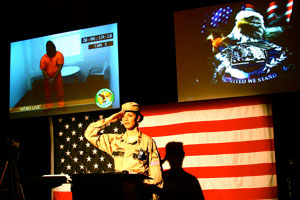 Coco Fusco’s career has expanded to several international circuits. Being from New York, her participation in Video/Transversales was especially interesting because it brought us closer to her research on performance, which has been widely spread in international publications.
Coco Fusco’s career has expanded to several international circuits. Being from New York, her participation in Video/Transversales was especially interesting because it brought us closer to her research on performance, which has been widely spread in international publications.
During the intervention with Sebastian Lopez, her thoughts on the impact of the context where artistic practices develop, at times of a deep social restructuring as part of a process of mediations within the contextualized art in such an artistic scenario as that of the U.S. -where the economic crisis has also influenced the visual production- was noteworthy. In relation to what is happening in Central America, Coco Fusco stated: “As in the United States, there is always a look to social issues, of course, with a different perspective, and bearing in mind financing as an important variable.”[ii]
Now, the selection of shorts proposed by Fusco in Video/Transversals isin linewith this “relevant” scenario Fusco referred to. Shestarted by assuming that, even when framing her projects outside the usual globalized settings of her work, the autonomous character of political-performance incursions revealed in the films succeeds in transcending the breach in political effectiveness, as the actions point towards the multiplicity of narrative approaches related to anthropological corporality, along with the social-political tensions associated with art.
Of the analyzed performances that depict any of these ideas, it was mentioned the one selected for the 2008 Whitney Biennial, A Room of One's Own: Women and Power in the New America (2006), in which Fusco, dressed up in a U.S. Army uniform stands at a podium at MoMA (New York), and reads out Our Feminist Future, a manifesto questioning the current readings of feminism by cultural institutions and in academic studies of gender.
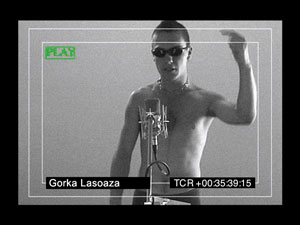 In addition to the conversations, her worldwide-known shorts were revisited: Mrs. George Gilbert (2004), and The Reapers (2001), the latter included in the 8th MERCOSUR Biennial. The meanings of her collaborative performance Operation Atropos (2006) were highlighted. The video features six women, including Fusco, who play scenes of a military training workshop that includes a simulated war imprisonment situation; a script in which the women were victims of an ambush, captured, stripped of everything they had and subjected to harsh interrogations. This whole dynamic was later transferred to a classroom-stage where all the tactics used in the training of the participants in the production and taught to the viewers were analyzed.
In addition to the conversations, her worldwide-known shorts were revisited: Mrs. George Gilbert (2004), and The Reapers (2001), the latter included in the 8th MERCOSUR Biennial. The meanings of her collaborative performance Operation Atropos (2006) were highlighted. The video features six women, including Fusco, who play scenes of a military training workshop that includes a simulated war imprisonment situation; a script in which the women were victims of an ambush, captured, stripped of everything they had and subjected to harsh interrogations. This whole dynamic was later transferred to a classroom-stage where all the tactics used in the training of the participants in the production and taught to the viewers were analyzed.
As a result of this approach, these projects have an halo of post-critical resonances on the military roles played by women in the army during the Iraq war, all of them exemplified in a manual of easy tactics compiled in her most recent publication, 2008, AField Guide for Female Interrogators made up by four chapters comprising a great deal of her provocative essays, as well as the performance A Room of One’s Own …produced during MoMA’s symposium The Future Feminist.
POETICS of VIOLENCE/ Regina JosE Galindo
Regina Jose Galindo has built over the last decade a remarkable career marked by performances that have established a before and after in the panorama of contemporary art of her country. From Guatemala City, where she lives, she organizes and produces her projects for several exhibition spaces of Europe and Latin America, and excels as the youngest artist of her generation in the international scene of performance.
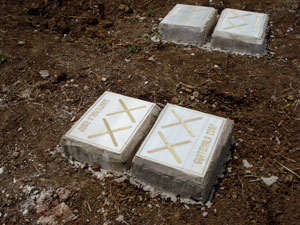 Galindo, also known as a writer, has been the bearer of paradigmatic artistic interventions amidst a social context in which violence against women reaches grim proportions. A priori situations during the 1960s and 70s would set the beginnings of her performances within her artistic strategies, as she starts using her body –mostly– as conceptual axes of such works. At the same time, Galindo’s work has given fresh impetus to discussions and reflections on states of inertia suffered by Central American societies, wasted by high levels of social violence, migration and corruption.
Galindo, also known as a writer, has been the bearer of paradigmatic artistic interventions amidst a social context in which violence against women reaches grim proportions. A priori situations during the 1960s and 70s would set the beginnings of her performances within her artistic strategies, as she starts using her body –mostly– as conceptual axes of such works. At the same time, Galindo’s work has given fresh impetus to discussions and reflections on states of inertia suffered by Central American societies, wasted by high levels of social violence, migration and corruption.
Video/Transversales was favored with the inclusion of four video-performances of strong social and political connotations, with the broad range of productions made by Galindo between 2003 and 2007. This selection, unpublished in the local context, influenced the conditions of otherness of the fabric of the Honduran society, gradually submitted to increasingly higher levels of social violence, like in other countries such as Guatemala or El Salvador.
Within this sequence, the trigger of such denunciations was the documentary video Who can erase the traces (Quién puede borrar las huellas?, 2003), in which Galindo, in protest of the approval of ex dictator Efrain Rios Montt’s presidential candidacy, walks down central streets of Guatemala City with her feet wet in human blood, leaving behind a trace, from the Constitutional Court to the Presidential Palace. Seen as an action, she denounces the impunity of the Guatemala political life, and later she would reflect on other parallel realities. Galindo’s enquiries not only had an impact in the fissures of the broken political system, but unveiled the social indifference to genocidal acts by the army in the 1980s, which left a mark on a dissenting generation like hers.
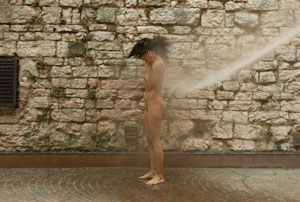 In Galindo’s creative processes and inquiries, in the same way that she establishes the poetics of violence as a constant element, she erodes the field of symbols by means of simplified acts like Social Cleanup (Limpieza Social,2006) and Ablution (Ablución,2007). Likewise, she vindicated memory as ramifications of the historical process in XX (2007), a documentary video that shows the placing of 52 gravestones to anonymous individuals at La Verbena cemetery of Guatemala City.
In Galindo’s creative processes and inquiries, in the same way that she establishes the poetics of violence as a constant element, she erodes the field of symbols by means of simplified acts like Social Cleanup (Limpieza Social,2006) and Ablution (Ablución,2007). Likewise, she vindicated memory as ramifications of the historical process in XX (2007), a documentary video that shows the placing of 52 gravestones to anonymous individuals at La Verbena cemetery of Guatemala City.
Moreover, Galindo’s collaboration with Moviendo el Mapa resulted in a commissioned project about a particular topic in Honduras that took as background reference a Law that binds every employee, whether from the public or private sector, to be interviewed with the use of a lie detector. Being this a hiring trend in the United States in any private company, Galindo said: “I find it interesting that they make people deal with such subjective machines, but I’m not trying to criticize the method as such, but to analyze the reason why they take such measures.”
Galindo’s action was recorded in a video, in which, once again, she assumed her subversive character and generated, as a predicted result, images showing the artist submitted to a personified interrogatory, and in which you can notice insidious questions that add to the psychosomatic characteristics of the interrogated person. As a consequence, Galindo obtains an extremely negative result at the “interview” and it would locate the context and repercussions of this project “in Honduras and Guatemala, like in many Latin American countries (…) that have used a lie detector, influenced by the United States, to have greater control over workers in hundreds of public and private institutions and, thus, looking for answers that can’t actually be taken for granted.”[iii]
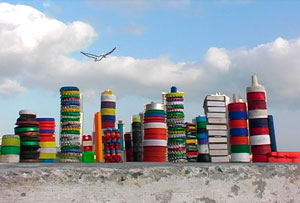 Processes / URBAN ENVIRONMENTS
Processes / URBAN ENVIRONMENTS
Donna Conlon, living in Panama City and biologist by profession, is one of the artists that has managed to position her video proposals, installations, photography and performances in both Central America and the international arena, leading a permanent dialogue with her concerns for the environment and showing in her actions a simultaneity of connections that move between the ephemeral and the transcendental. She has demonstrated so based on an ecologic awareness and productions in consonance with the urban spaces she explores.
In a series of videos, and collaborative projects with different artists, including Jonathan Harker and Marcus Ahlers, Conlon has created metaphors around the growth of Panama City, which suffers the physical and human displacements caused by successive urban interventions. This has entailed several phenomena of replacement in the local landscape, absence and loss of the historical memory, environmental contamination, etc, just to mention a few of the main problems caused by destroying the ecosystem, in and off the Panamanian and Caribbean coast.
Taking into account these issues, Conlon goes over an extensive repertory in situ for the creation of projects that include photography as object of intervention in the landscape; her Synthetic Landscapes series (2007) is one example; it was commissioned for the exhibition Positions in Context by the Cisneros Fontanals Foundation (CIFO), which gave rise to the first discussions and relations of the collaborative projects she would later carry out for the Moving the Map platform. Earlier, she had made emphasis in the video selection that she included in Video/Transversales, made up by Summer Breeze (2007), Más me dan (2005) and Urban Spectrums (2004), which have made up in a great extent the eco-visual repertory of her poetics and dialectic bridges with the logical events in which the majority of the environments she intervenes interact with each other by collecting and accumulating ordinary objects, relocated in the artist’s own usual setting.
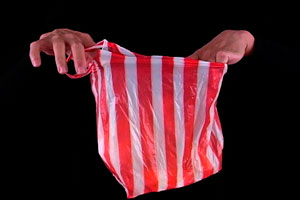 This is how the references in her videos and actions establish the projection of a collaborative work with Marcus Ahlers, with whom she shares her interest in technology and biology. Nominated as a “social-artistic gesture”, they start with the intervention of a specific space in which the act simultaneously for construction and socializing, as well as for the use of recyclable technology. Conlon and Ahlers insert in the community of Barrio Abajo in Tegucigalpa, a project with scientific and artistic characteristics by building a solar distiller of drinkable water called Truly Blue Water.
This is how the references in her videos and actions establish the projection of a collaborative work with Marcus Ahlers, with whom she shares her interest in technology and biology. Nominated as a “social-artistic gesture”, they start with the intervention of a specific space in which the act simultaneously for construction and socializing, as well as for the use of recyclable technology. Conlon and Ahlers insert in the community of Barrio Abajo in Tegucigalpa, a project with scientific and artistic characteristics by building a solar distiller of drinkable water called Truly Blue Water.
Thus, a project within the Honduran context is conceptualized, added to the vulnerability of risk zones devastated by Hurricane Mitch in 1998, which altered a large part of that area turning it into a landscape depressed by the contaminated waters of the most important river of the city of Tegucigalpa. Following this event, the two artists had the intention of generating, by means of an action prolonged over the ten days of the process, possible reflection and viewpoints about ecology, society and art.
As a result of the creative and social process, the photographic binnacles portray different moments in which the interaction with locals became the main dialogic actions, in parallel with the symbolic act of purifying the water and pour it back into the river. The images are managed in a journalist style, referring us to the perception of the in situ act, in which the artists reveal the purpose of highlighting the positive in terms of preservation and prevention in the sustainability of those ecosystems, encouraging creation in what has become a negative presence.
“Starting by the re-contextualization of the poetics around water, or the basic notions of the relations between technology and art proposed by this project, we value the sociological frameworks involved and the contradictions represented by the use of a rudimentary technology and basic survival techniques faced with the utopian criticism of out contemporary culture …”, Conlon and Ahlers said. For both artists, the gesture in reference to the control of water makes emphasis in the importance of biology for the social systems in view of the transformation of our interaction with natural environments.
After going through the processes of Moving the Map and its international program Video/Transversals, as we go deeper into the different creation strategies of Fusco, Galindo and Conlon, we notice the dynamics of the curatorial project that gradually built different facets and overlapping of all those topics related with the artists and their contexts. At the same time, we visualized the humanist vocation any cultural project requires, belligerent in terms of bringing the younger generations closer to the mobilization of the regional artistic scene from a perspective that favors experience and exchange.
Related Publications

How Harumi Yamaguchi invented the modern woman in Japan
March 16, 2022
Giovanni Duarte and an orchestra capable of everything
August 26, 2020











